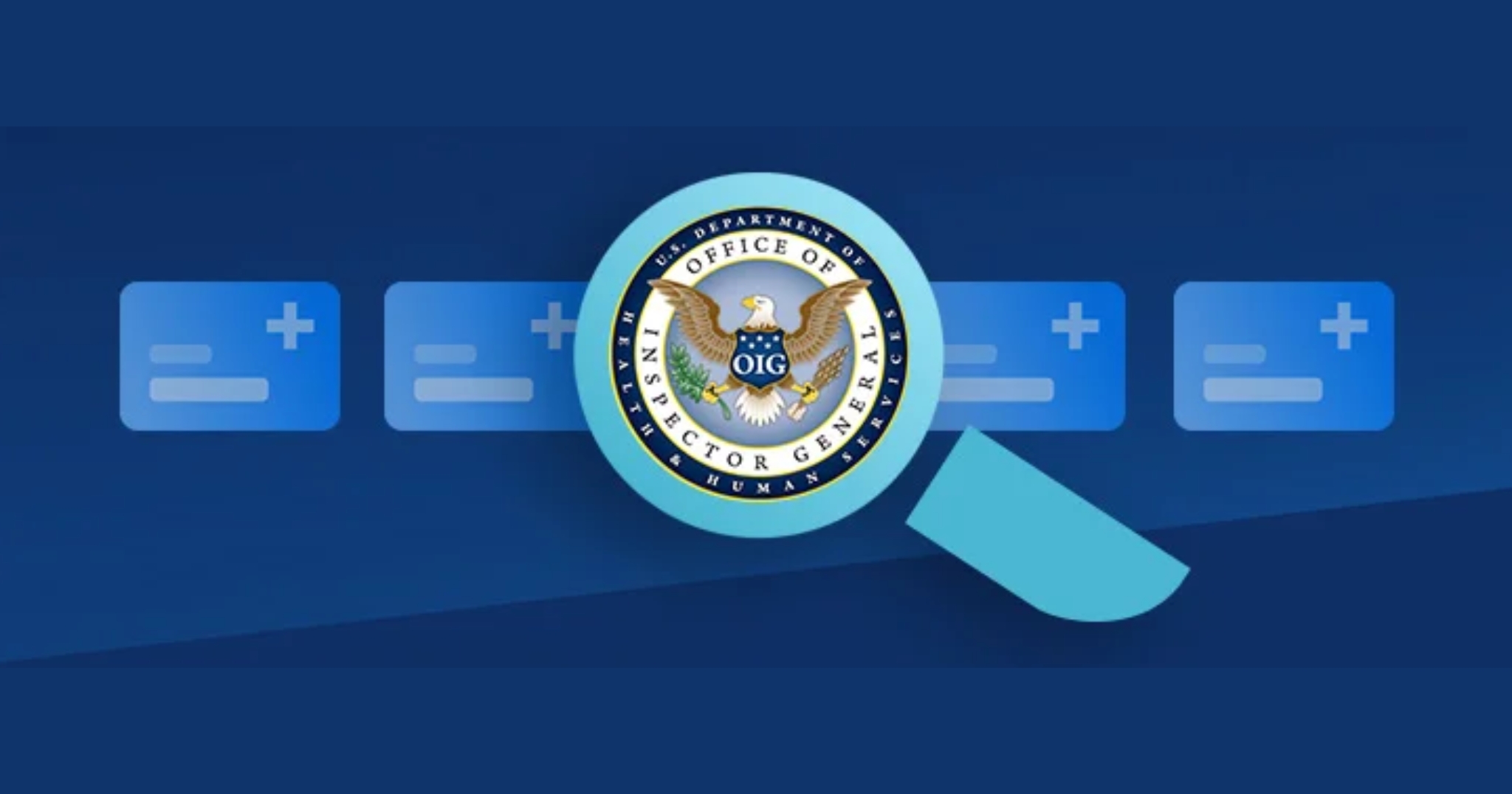Healthcare providers which serve Medicare and Medicaid enrollees have a duty to know if their employees, contractors, or prospective hires have been excluded by the Health & Human Services Office of the Inspector General (HHS-OIG) from participating in federal healthcare programs. OIG exclusion monitoring is integral to maintaining compliance and ensuring patient safety.
It’s important to understand the best practices for monitoring to prevent fraud in your organization. With that said, exclusions can be complex, so we’re taking it back to basics and answering key questions that tell you everything you need to know about OIG exclusions monitoring.
What is the OIG?
The Office of Inspector General (OIG) has been fighting waste, fraud, and abuse in the United States since 1976. Consider the OIG watchdogs for Health & Human Services (HHS) programs. They strive to improve the efficiency of Medicare, Medicaid, and 100+ additional HHS programs.
This is a big deal since HHS programs make up a significant portion of the Federal budget, approximately $1.4 trillion in 2022.
OIG conducts audits, investigations, and evaluations across the United States. The efforts result in OIG-developed and distributed resources that help those in the healthcare industry comply with waste and fraud abuse laws. They can also result in criminal, civil, and administrative enforcement against individuals and entities directly associated with fraud or waste.
What are OIG Exclusions?
OIG has been implementing exclusions for over 40 years. The Social Security Act (specifically sections 1128 and 1156) gives the OIG the authority to exclude individuals or entities from participating in and receiving payment from Federally funded programs. This prohibition also applies to anyone who employs or contracts with the excluded person, any hospital or other provider for which the excluded person provides services, and anyone else.
Federal health care programs will not pay for services, orders, or prescriptions furnished by an excluded party. This includes Medicare, Medicaid, and all other Federal plans and programs that provide health benefits funded directly or indirectly by the United States.
It’s important to note that individuals/entities receive a Notice of Intent to Exclude (NOI) from the OIG prior to being excluded. The party that received the NOI has 30 days to respond in writing and provide supplemental materials for consideration. The OIG reviews these materials, along with all available information, when deciding whether or not to move forward with the exclusion.
What are considered grounds for exclusions?
Individuals or entities can be excluded for various reasons. The OIG breaks exclusions into two categories: mandatory and permissive.
Mandatory exclusions
By law, the OIG must exclude individuals and entities convicted of certain types of criminal offenses from participating in all Federal healthcare programs. Offenses that fall into the mandatory exclusion category include: felony convictions for Medicare or Medicaid fraud, patient abuse or neglect, controlled substances, and more. Mandatory exclusions hold a minimum penalty of 5 years.
Permissive exclusions
Permissive exclusions are discretionary. Although not required by law, OIG may exclude individuals and entities for misdemeanor convictions related to health care fraud, the unlawful manufacture, distribution, prescription, or dispensing of controlled substances, and more. This exclusion type holds an average penalty of 1-3 years.
See a comprehensive list of mandatory versus permissive exclusions here.
How do I determine if an individual or entity is excluded?
Those that meet the OIG’s grounds for exclusion are compiled in the List of Excluded Individuals/Entities (LEIE). The OIG maintains the LEIE and updates it on a monthly basis.
You can access the downloadable list here or search for an excluded party by name.
However, most organizations find the process of manually cross-referencing their employee/vendor roster with the exclusions lists to be extremely time-consuming. The more efficient and “best practice” approach is utilizing an automated solution that cross-references your employee/vendor list with the LEIE every month. Automated solutions alert your team of any matches discovered so they can focus on addressing matches, not finding them. Plus, these solutions provide a secure digital space to store a record of exclusion checks.
How often should healthcare organizations check the LEIE?
The OIG updates its LEIE on a monthly basis, so checking each new list is imperative. Additionally, The Centers for Medicare & Medicaid Services (CMS) requires healthcare organizations to screen against the LEIE at least monthly.
Is my organization liable for employing an excluded individual or entity?
According to the OIG, “Anyone who hires an individual or entity on the LEIE may be subject to civil monetary penalties.” To avoid civil monetary penalties and remain compliant, it’s important to screen the LEIE (along with SAM.gov and State lists) on a monthly basis.
–
Still have questions about OIG exclusions? Read our additional FAQs.
If you’re interested in exploring an automated monitoring system, click here to chat with our team.

